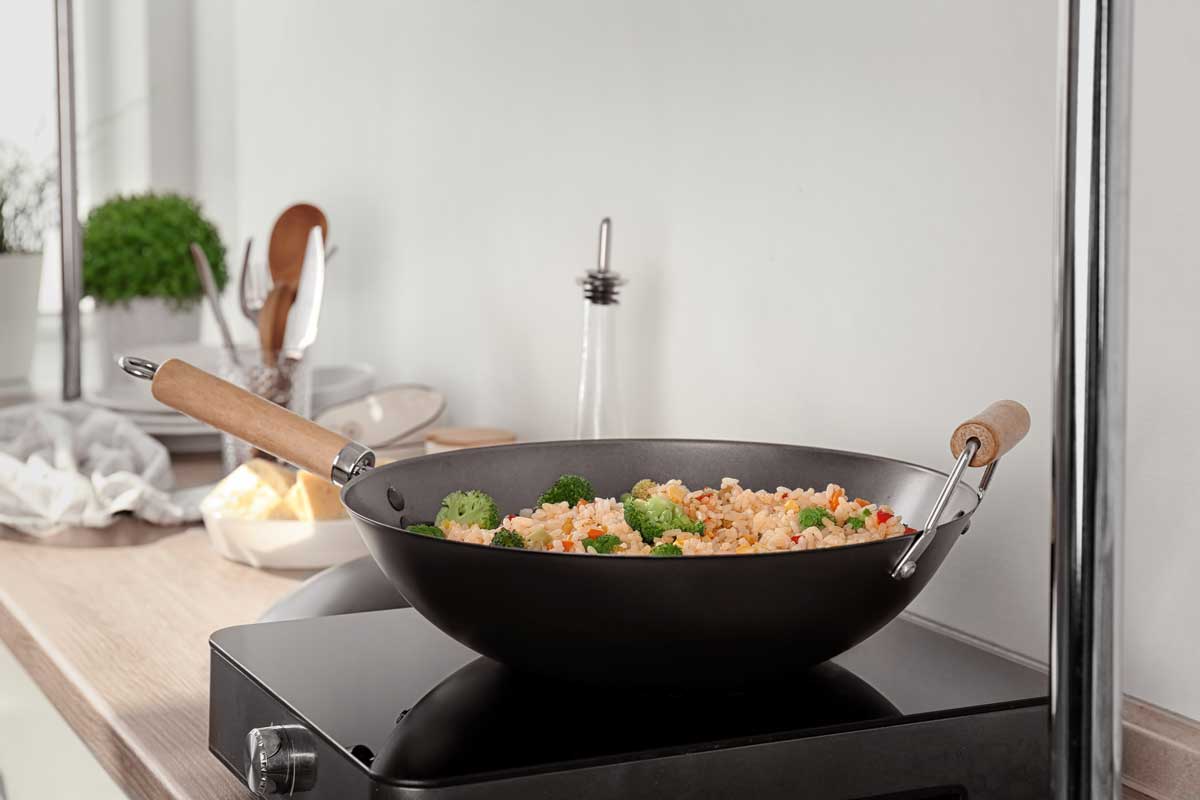Can you use a wok on an electric stove
I. Exploring the Compatibility of Woks with Electric Stoves

A. Understanding the Differences Between Gas and Electric Stoves
When comparing gas and electric stoves, it is important to understand the key differences that can affect wok cooking. Gas stoves provide an open flame, which allows for more immediate and precise heat control. On the other hand, electric stoves use coils or smooth-top heating elements, which provide a more indirect and slower heat source.
Assessing the Heat Distribution and Control of Electric Stoves
Electric stoves often have uneven heat distribution due to the design of the heating elements. This can present challenges for wok cooking, as a wok relies on even and intense heat for proper stir-frying. Additionally, the heat control on electric stoves may not be as responsive as gas stoves, making it more difficult to adjust the heat quickly.
Exploring the Challenges of Using a Wok on an Electric Stove
Using a wok on an electric stove can be challenging due to the slower heat transfer and uneven heat distribution. Stir-frying requires quick and precise heat adjustments, which can be more difficult to achieve on an electric stove. Woks with flat bottoms may also have limited contact with the heating element, further hindering heat transfer.
B. Evaluating the Suitability of Woks for Electric Stove Cooking
Assessing the Construction and Design of Woks for Even Heat Distribution
To ensure even heat distribution on an electric stove, it is important to choose a wok with a flat bottom. A flat-bottomed wok provides better contact with the heating element, improving heat transfer. Additionally, woks with thicker bottoms can help retain heat and distribute it more evenly throughout the cooking process.
Gaining Insights into the Types of Woks That Work Well on Electric Stoves
Carbon steel woks are often recommended for electric stove cooking due to their excellent heat conductivity and durability. They heat up quickly and evenly, allowing for efficient stir-frying. Non-stick woks can also be used on electric stoves, but they may not provide the same level of heat retention and heat distribution as carbon steel woks.
II. Adjusting Cooking Techniques for Electric Stove Wok Cooking
A. Preheating the Wok Properly
Understanding the Importance of Preheating for Stir-Frying Success
Preheating the wok is crucial for achieving the desired results in stir-frying. It allows for quick and even heat distribution, ensuring that the food cooks evenly and retains its texture and flavor. Preheating also helps to prevent the ingredients from sticking to the wok.
Exploring Preheating Techniques for Electric Stove Wok Cooking
To preheat a wok on an electric stove, start by setting the heat to high. Allow the wok to heat up for a few minutes until it becomes hot to the touch. To test if the wok is ready, sprinkle a few drops of water on the surface – if they sizzle and evaporate immediately, the wok is properly preheated.
B. Mastering Heat Control on Electric Stoves
Understanding the Impact of Electric Stove Heat Settings on Wok Cooking
Electric stoves typically have heat settings ranging from low to high. It is important to understand how these settings affect wok cooking. Low heat is suitable for simmering and gentle cooking, while high heat is necessary for stir-frying. Medium heat can be used for sautéing or browning.
Evaluating Techniques for Adjusting the Heat to Achieve Desired Results
To adjust the heat on an electric stove for wok cooking, it may be necessary to alternate between different heat settings. Start with high heat for initial stir-frying, then reduce the heat to medium or low to prevent burning. It is important to continuously monitor and adjust the heat as needed to achieve the desired results.
III. Overcoming Challenges and Maximizing Flavor with Electric Stove Wok Cooking
A. Addressing Heat Retention Issues on Electric Stoves
Assessing Ways to Improve Heat Retention in Wok Cooking
To improve heat retention on an electric stove, consider using a wok with a thicker bottom. This will help to retain heat and distribute it more evenly throughout the cooking process. Another technique is to preheat the wok for a longer duration before adding ingredients, allowing it to reach a higher temperature.
Exploring Techniques to Optimize Flavor Development Despite Heat Limitations
To optimize flavor development when using an electric stove, it is important to use high-quality ingredients and maximize the use of spices and seasonings. Searing ingredients quickly on high heat can help to develop a smoky flavor. Additionally, using aromatic spices and seasonings can enhance the overall taste of the dish.
B. Enhancing Flavors with Proper Seasoning and Spices
Understanding the Importance of Seasoning the Wok for Authentic Wok Flavor
Seasoning a wok is essential for creating authentic wok flavor. This process involves heating oil in the wok and allowing it to coat the surface, creating a non-stick layer. Seasoning also helps to prevent rust and improve heat distribution. It is important to season the wok before its initial use and to regularly maintain the seasoning.
Exploring Spice and Seasoning Combinations for Delicious Electric Stove Wok Dishes
When cooking with a wok on an electric stove, it is important to use spices and seasonings that can withstand the slower heat transfer. Strong and aromatic spices like ginger, garlic, and chili peppers can add depth and flavor to the dishes. Additionally, combining soy sauce, oyster sauce, and rice wine vinegar can create a delicious balance of flavors.
